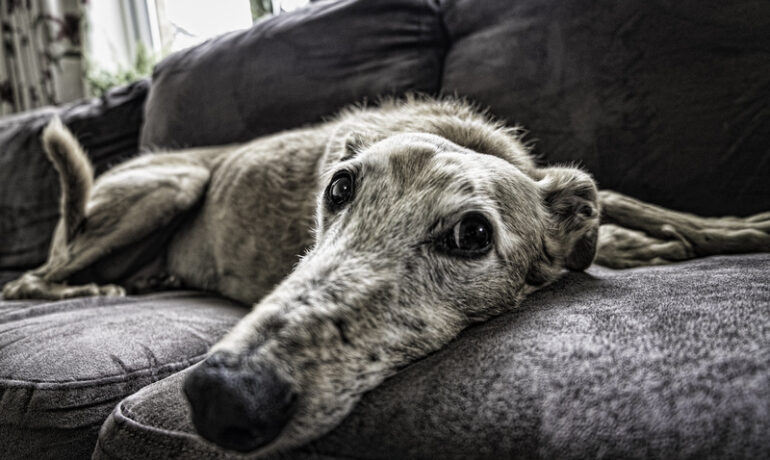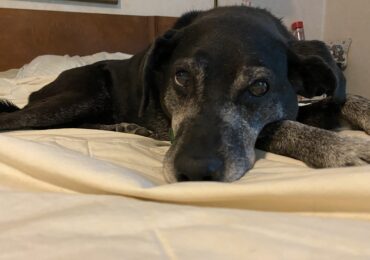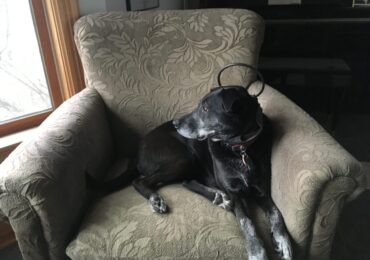Pain in animals has been addressed as a result of injury, aging, or surgery. There are many references to managing acute pain caused by trauma or surgery. It is easy in a sense to assume and acknowledge an animal who was hit by a car is in pain. The day after a tooth extraction is also a situation to assume some discomfort and give the prescribed anti-inflammatory medication to reduce or prevent pain. In these situations, it would also be expected that a dog or cat would be less active, eat less, and avoid touch or petting. When the body is sore, it is more sensitive to soft touch or nonpainful stimuli. This state of allodynia can create increased anxiety or aggression about normal, nonpainful handling such as wiping the paws or harnessing. After trauma, surgery, or illness, it is vital to give your pet the prescribed pain relief medications and avoid petting in the first few days. If there is an increase in anxiety or aggression, be sure to tell your veterinarian as it may be a sign of unmanaged pain. 
With aging pets, there may be a low level of chronic pain that can cause allodynia. The intensity of pain sensation may not be intense, thereby only showing signs of anxiety or aggression. Unfortunately, this reflection of pain as anxiety is missed by both pet owners and veterinary staff. Veterinarians have various pain scoring tools, yet there is no current standard for general practice for pain assessment, especially incorporating behavior evaluation. A recent article in Today’s Veterinary Practice outlines the difficulty in determining pain and assessment’s behavior effect using the existing pain scoring resources. What also complicates evaluating behavior with physical evidence of pain is getting accurate reporting from owners about any changes in anxiety or aggression in the home as we all improve in using body language handouts and Ladder of Aggression to describe what we see.
The biochemical changes in the body from chronic pain involve increased stress hormones, adrenaline, and a decrease in serotonin. These changes are part of the reasons for the increased signs of anxiety or aggression. Reducing pain with appropriate pain relief medications can improve behavior. Gabapentin, Tramadol, and other pain medications can directly increase the serotonin effect in addition to the direct effect on pain pathways. Often, we can see a quick improvement in aggression or anxiety with pain relief medication. This response tells us that pain is a part of the effect on behavior and must be addressed and changes in the home environment. Joint supplements that include Omega 3 fatty acids are also important adjuncts to care and scavenging the free radicals from inflammation, which also helps improve brain function. Daily walks can be an important step in keeping joints supple and less painful and improving calming brain chemistry.

Dr. Daniel Scott has published about the relationship between pain and behavior in veterinary medicine. In this article, Dr. Scott helps us understand the need to think of pain as a source of anxiety and aggression in companion animals. I appreciate his approach to using pain relief and observing behavior change, especially where there is unclear evidence for a source of pain. The risk of not addressing possible pain and increasing aggression or anxiety is worse than any medication risk. Response to therapy is a medical evaluation tool and should be used with possible pain in mind.
I have had many cases where an infected tooth or back pain was at the root of a pet’s anxiety. As I developed my medical skills, I kept an eye out for chronic pain problems and took an approach to always managing my patients’ medical and behavioral health. As a result, aggression and anxiety resolved much quicker when addressing the suspected pain. I encourage veterinary professionals to use pain relief, even if the source of pain is not obvious. It can be a tremendous help to improve the welfare, behavior, and health of our pets.
Thanks!
Sally J Foote DVM, CABC=-IAABC, LSHC-S


